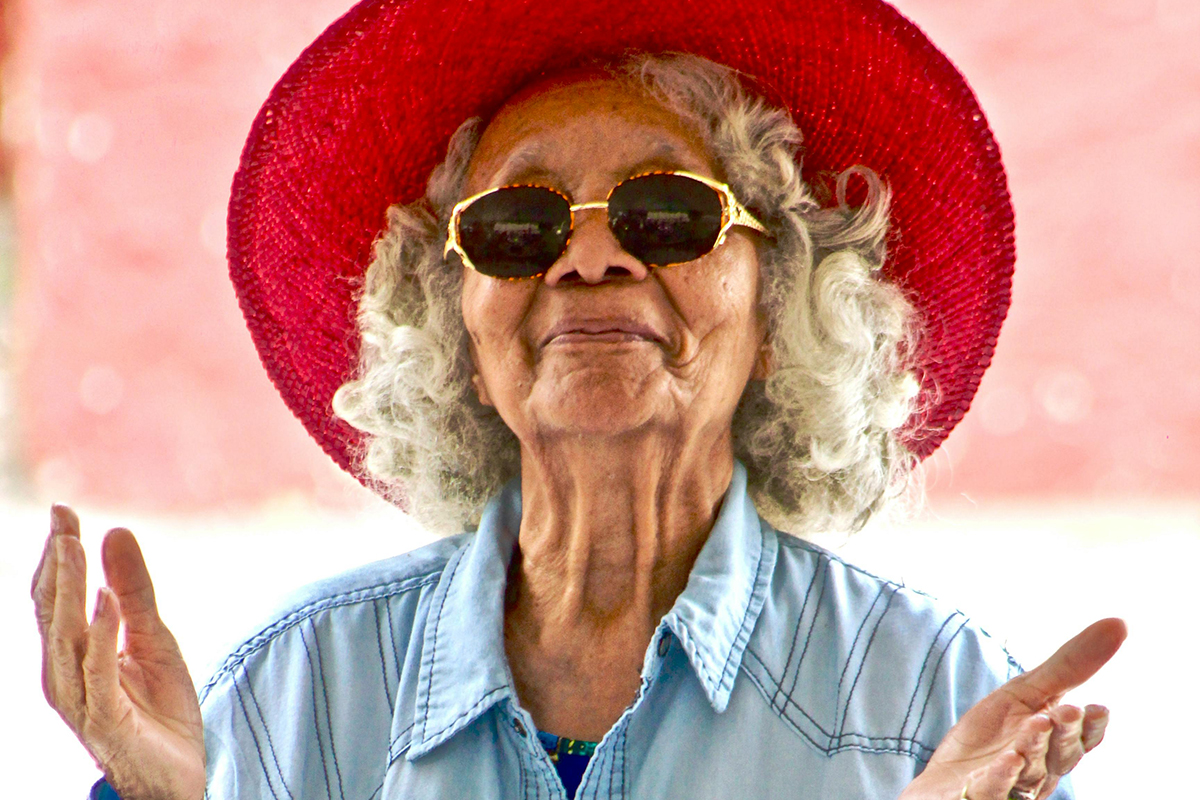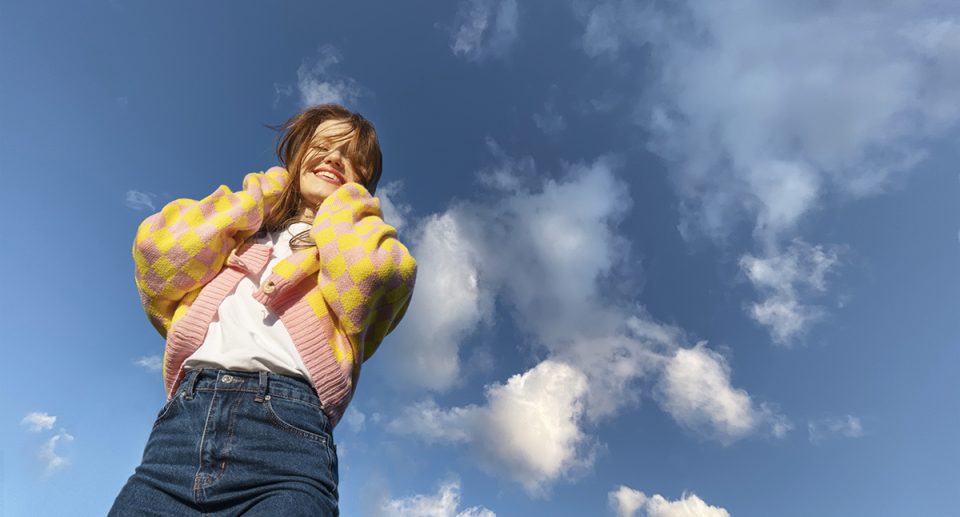Breathwalk – Relaxed meditation while you walk
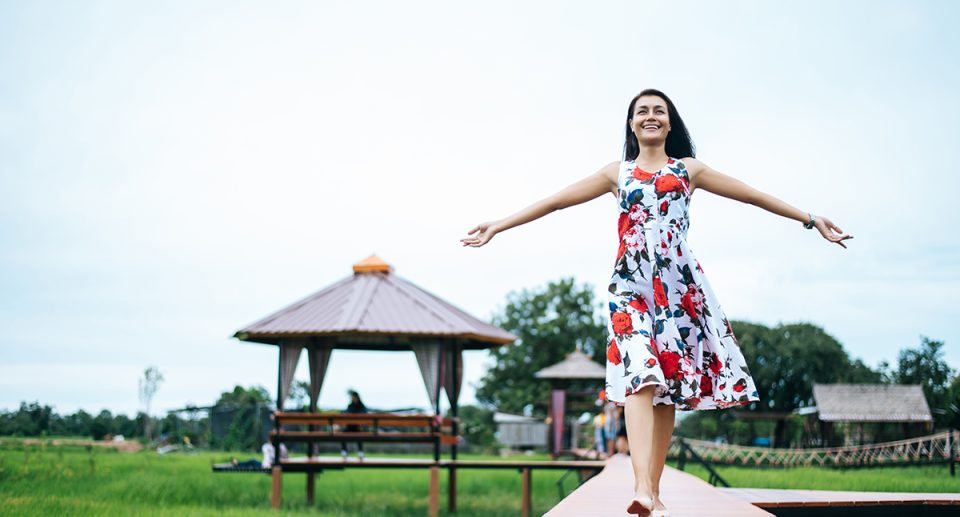
Nearly everyone is aware of the fact that incorporating breathing and meditation exercises into our daily routines promotes the well-being of our body, mind, and spirit. Taking a short period of time in a quiet environment not only induces relaxation but also aids in restoring balance. However, in the midst of our fast-paced lives, it can be challenging to grant ourselves these moments of rest.
Nevertheless, there is a practical tip to experience the benefits of focused breathing: combine it with another inherently natural activity – walking! By consciously and harmoniously engaging in these two activities, you can immediately reap positive health effects.
This technique, also known as ‘Breathwalk’, involves coordinating your breathing pattern with your walking rhythm. It is most advantageous when performed outdoors and is also highly suitable for individuals who have little to no experience with yoga.


The Breathwalk program consists of five distinct phases
- Awakening. This initial phase involves warming up the body, mind, and soul, infusing them with vitality and energy.
- Focus. The first set of walking exercises encourages directing attention to the body’s movements, fostering a deep connection with them.
- Harmonize. At this stage, walking and breathing harmoniously synchronize. The Breathwalk commences, with both elements attuned to each other.
- Balance. Transitioning to a slower pace, the focus shifts to sensory awareness during stretching exercises. All senses are engaged in achieving equilibrium.
- Integration. Referred to as the ‘Innerwalk’, this phase involves slow walking or standing still, allowing the exercises’ outcomes to be fully integrated into your body’s own system.
By progressing through these five phases, the Breathwalk program maximizes the benefits and facilitates the seamless incorporation of the exercises into your holistic well-being.
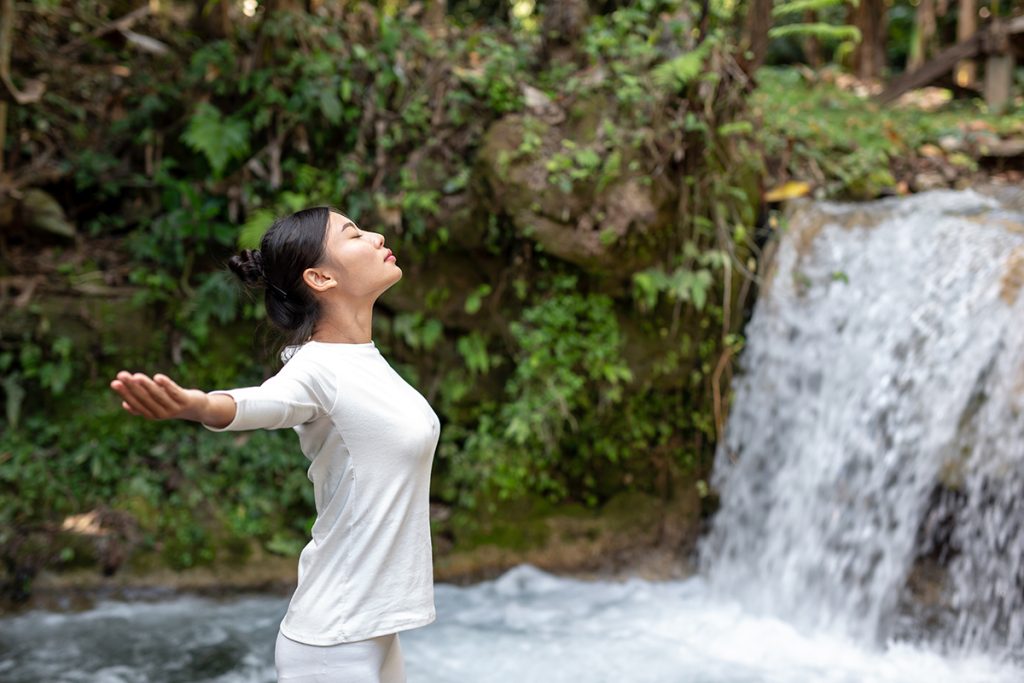

There are different breathing patterns – each with its own effect on our health. Here we explain 2 basic breathing patterns:
Exercise 1: The Eagle. Inhale and exhale in 4 parts (4:4)
Maintain a consistent stride while following this breathing technique: inhale through your nose for four steps, and exhale through your nose for four steps. Allow yourself a brief pause between each breath cycle. Sustain this pattern for three minutes, and then resume normal walking for five minutes. Repeat this sequence multiple times.
This exercise revitalizes your energy and enhances mental clarity. To further enhance the practice, mentally articulate the primal sounds SA, TA, NA, MA in synchrony with your walking rhythm, associating each syllable with a breath segment and a step.


Exercise 2: The Dove. Inhale and exhale in 8 parts (8:8)
Sync your breath with your steps by inhaling through your nose eight times, followed by exhaling through your nose eight times. The breathing pattern of the Dove expands upon that of the Eagle. It requires a bit more focus and is typically practiced at a slower pace.
During this exercise, you can also integrate the primal sounds SA, TA, NA, MA with your walking rhythm. Maintain this breathing pattern for three minutes, and then resume regular walking for five minutes. Repeat this sequence several times. This exercise promotes inner peace and clarity, offering a serene experience.
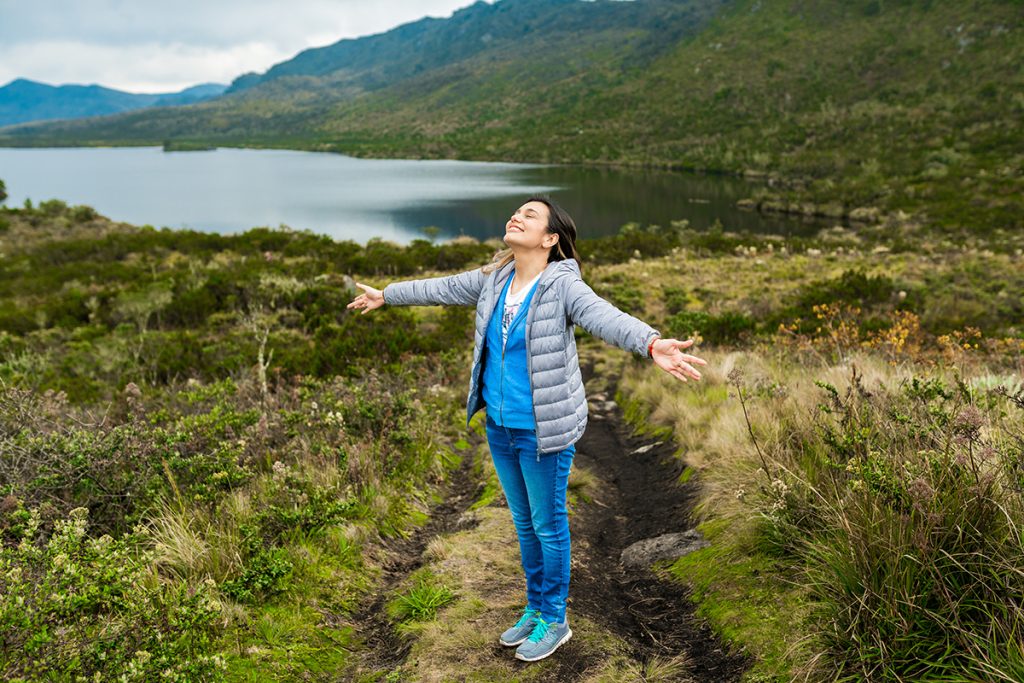

BreathWalk – Relaxed meditation while you walk conclusion
Engaging in Breathwalk programs can invigorate not only your body but also your mind and spirit. The unique vitality derived from Breathwalk practice bestows four key advantages: heightened energy levels, enhanced mood regulation, improved mental acuity, and a profound sense of connection. These benefits combine to enrich your overall well-being and contribute to a harmonious state of being.
This article has provided a concise introduction to a captivating and advantageous form of meditation that shares similarities with sports. If you desire to delve deeper into this practice, then we encourage you to seek further information at a specialized yoga school. They can offer comprehensive knowledge and guidance on this intriguing subject.



